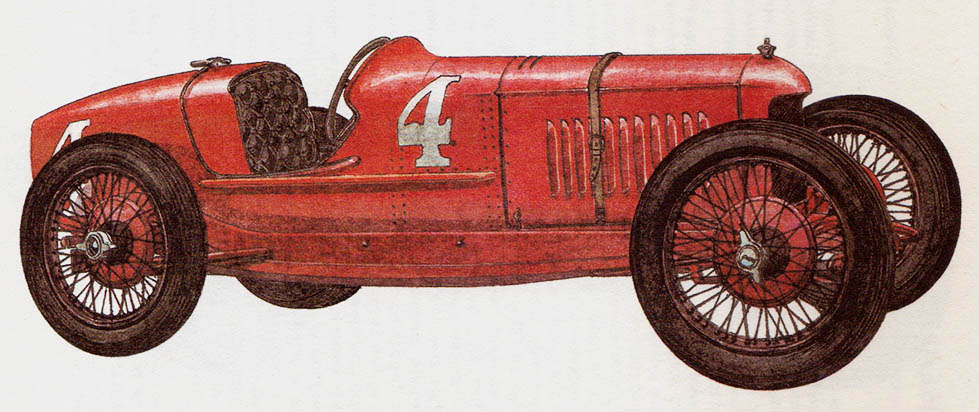FIAT 804 – year 1922
Fiat SpA, Turin, Italy.
The FIAT company prepared for the racing season 1921 brand new car marked with the symbol 801. It was a four-cylinder model by Giulia Cesar Cappa. This car won the Poggio di Berceto races in Parma. There is a new logo on the body - the word FIAT on a red background, surrounded by a laurel wreath. To start in the first Italian Grand Prix, 8 September 1921 in Brescia, a new car was prepared, by fitting a new eight-cylinder engine with power 88,3 kW (120 KM), while practically not changing the body. The cylinders were the same sizes as those used by Ballot (65×112 mm), and the displacement was 2973 cm3. However, due to mechanical defects, Bardino, who was driving this model, only came third, after two Ballots. Despite this failure, FIAT in 1922 r. was successful in the Grand Prix ACF competition in Strasbourg (16 July) and at the Italian Grand Prix in Monza in 1922 year.

Fiat SpA, Turin, Italy.
Prepared then because of the changed rules (maximum engine capacity 2 liters, minimum mass 650 kg) new car marked 804 — Corsa. At the start, which for the first time in Grand Prix races was simultaneous for all cars, The winner of the Grand Prix with 1907 year - Felice Nazarro. He overtook him 18 participating cars and won first place, reaching an average speed 126,67 km/h. Fiat 804 - The Corsa was equipped with a six-cylinder engine. The cylinders were in diameter 65 mm, piston stroke 100 mm and total capacity 1991 cm3. Compression engine 7 : 1 was gaining power 82,4 kW (112 KM) by 5000 RPM. Two camshafts in the cylinder head drove the cylindrical gears. Pressure lubrication was carried out using the so-called. crankcase with two trays per 35 liters of oil. The driving force was transmitted through a multi-disc clutch, a four-speed gearbox and a cardan shaft on the rigid rear axle. Mechanical servo brakes with aluminum brake drums acted on all wheels. The handbrake acted on the rear wheels of the Rudge-Whitworth type. The steel frame was suspended on leaf springs and equipped with friction dampers. The weight of the car complied with the regulations – 650 kg – and the maximum speed was 190 km/h. The aerodynamic body partially covered the engine cooling system, and the rear was protected by a fuel tank.